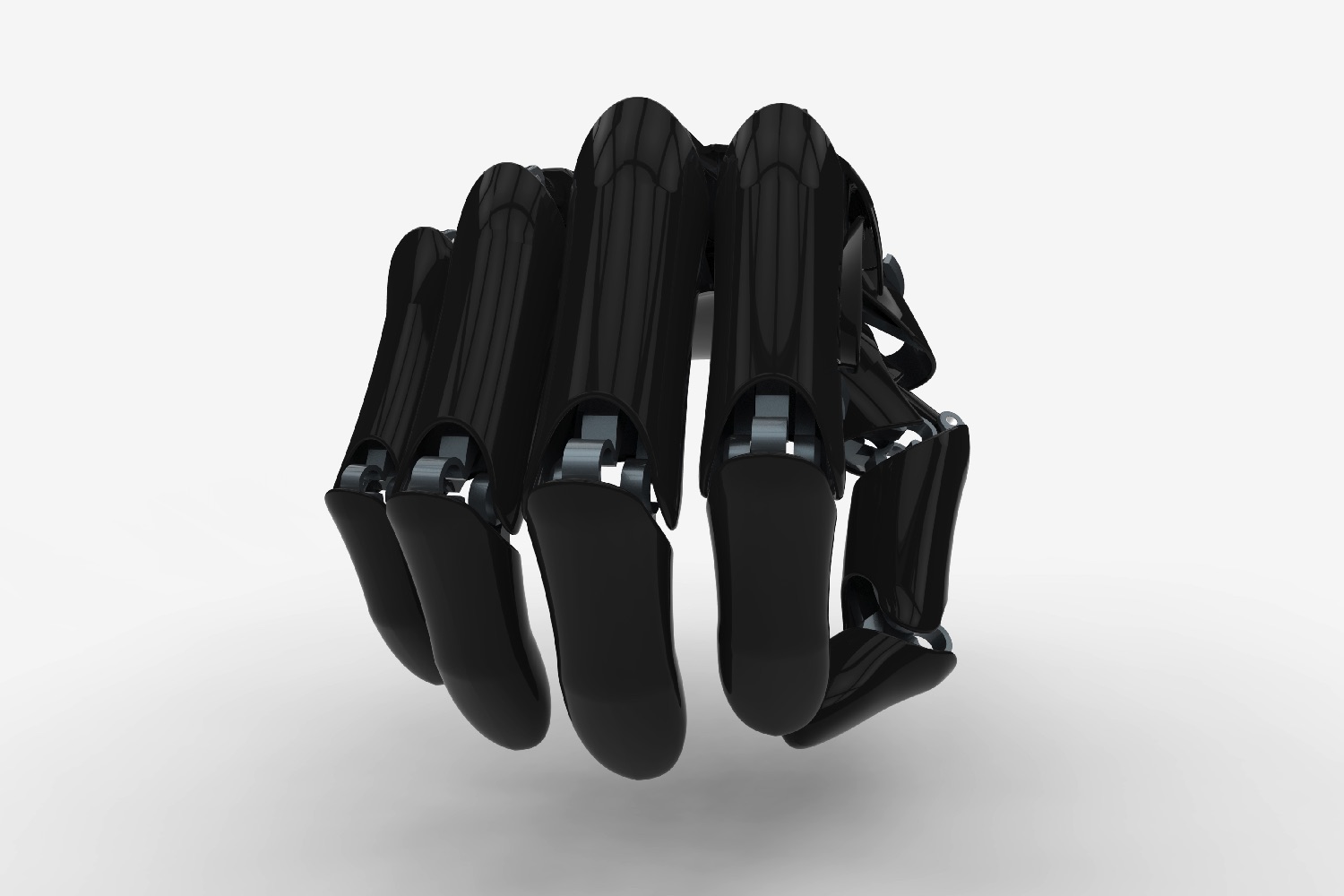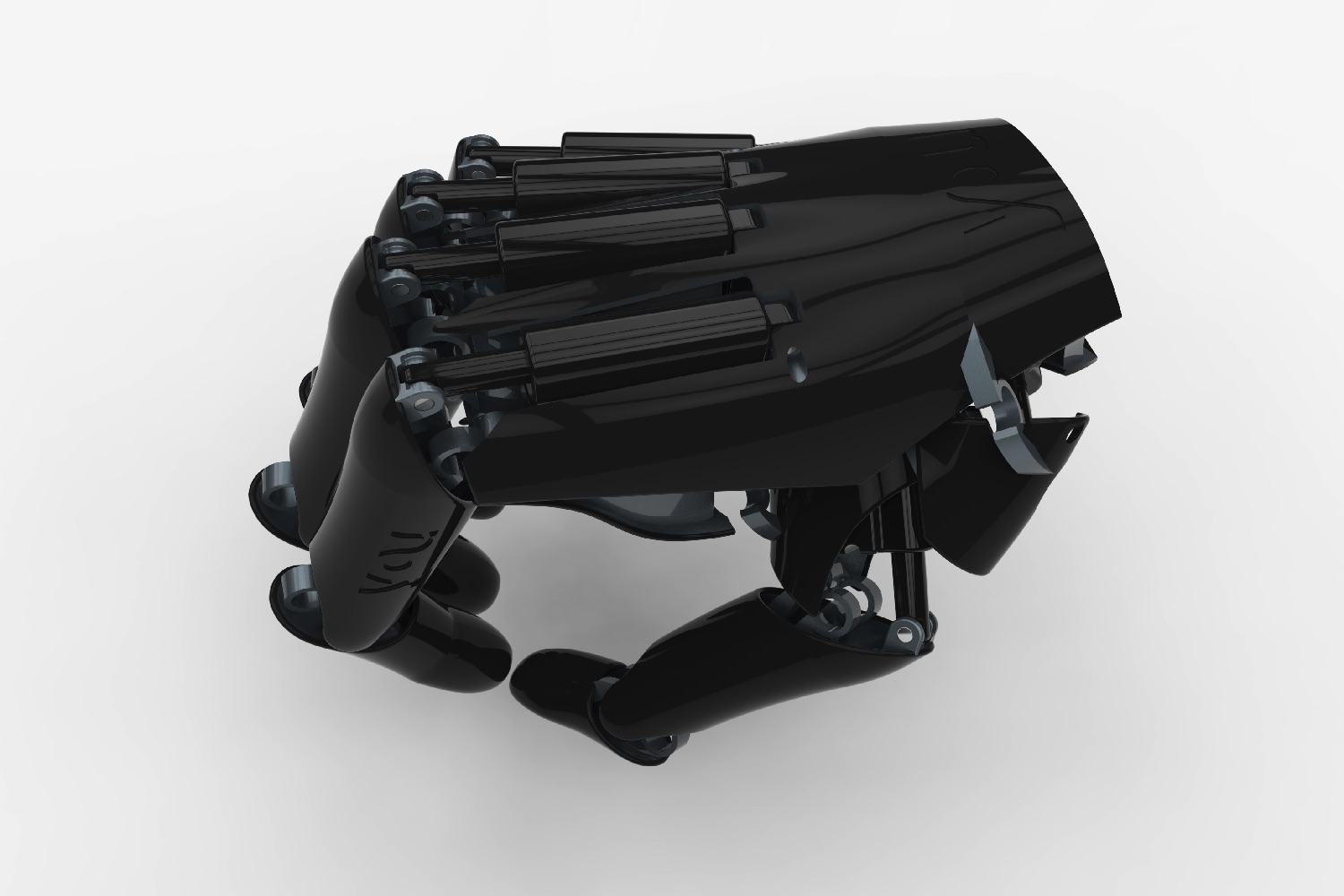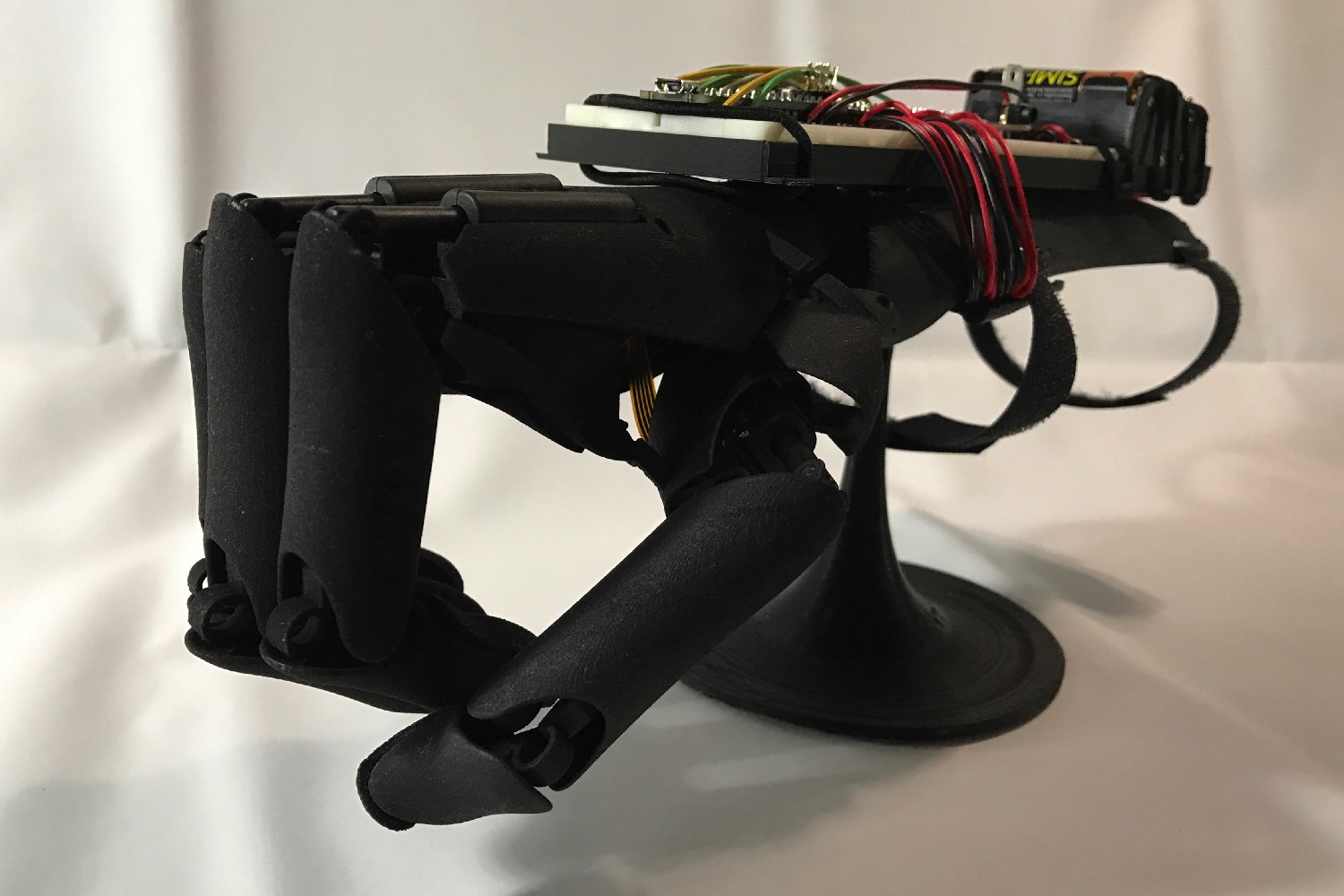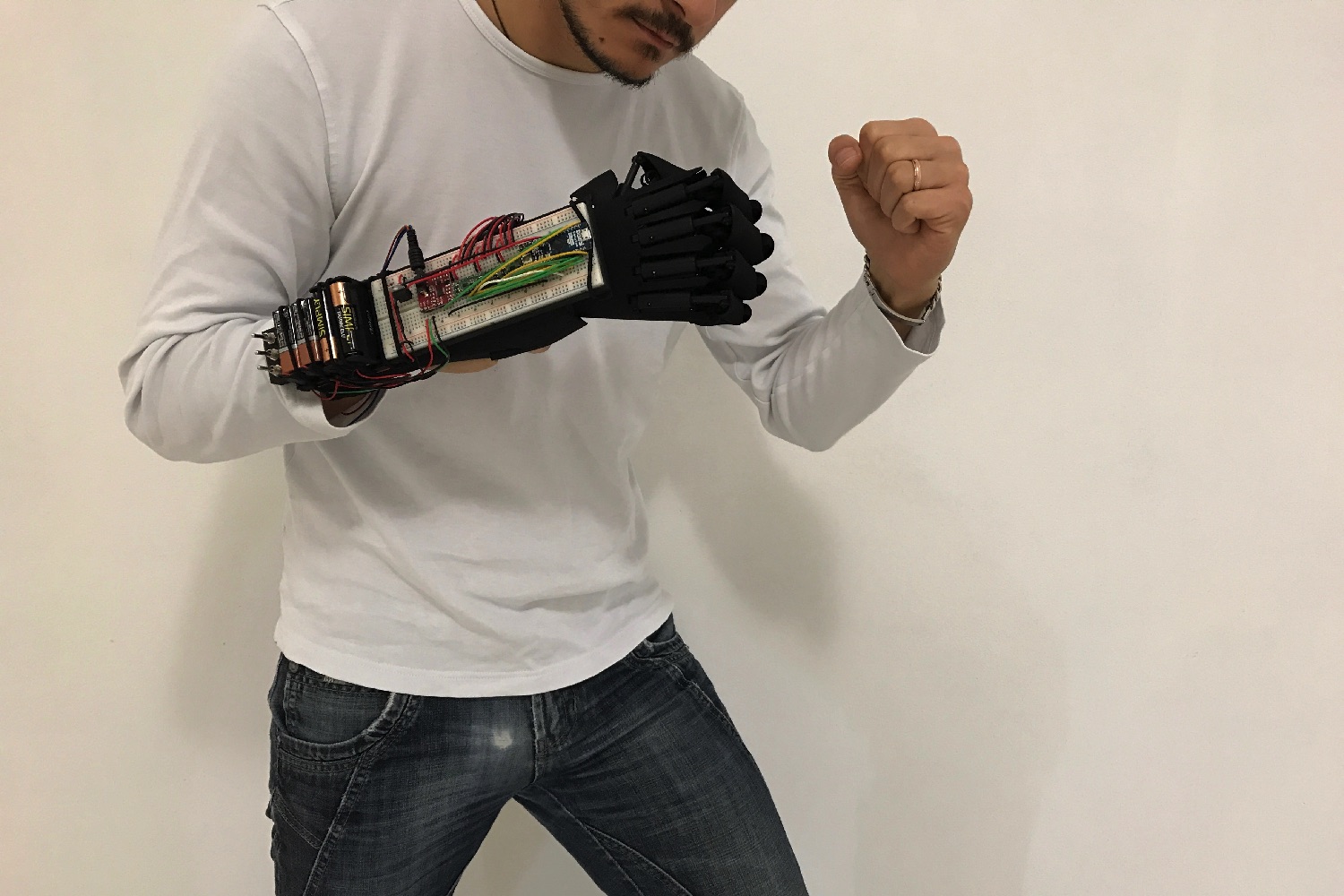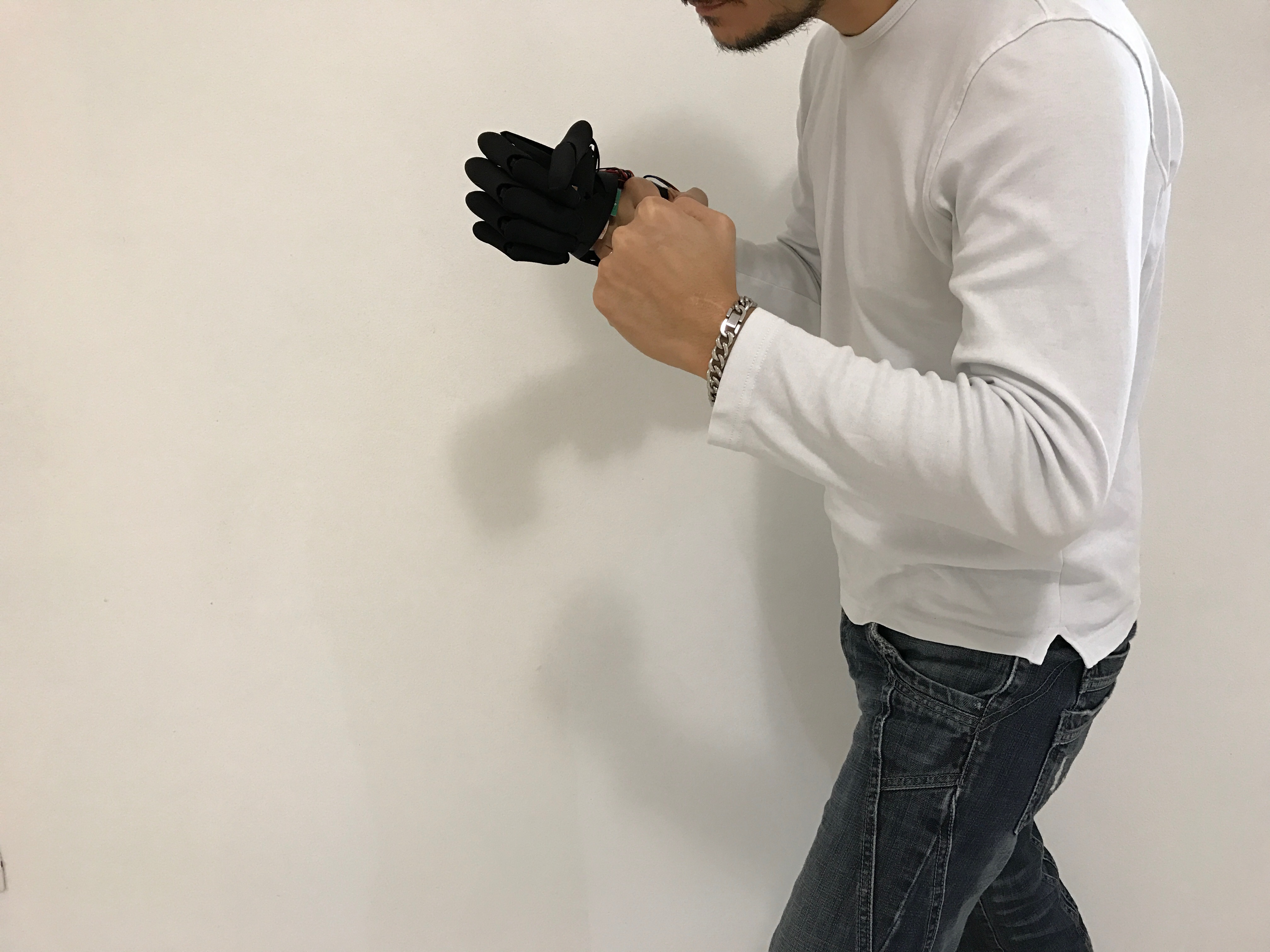Created by Italian engineer Federico Ciccarese, Youbionic is controlled by muscle movement, making it a potentially useful tool for people with missing or partially functioning hands — among other applications.
“Youbionic Hand is a robotic hand built with 3D-printing and commercial electronics [that are] readily available, [such as] as Arduino,” Ciccarese told Digital Trends. “The uses are many, such as prostheses for amputees, as a supporting device for people with difficulty moving, [or] as the final actuator for robotic arms.”
While Ciccarese is excited about the possibility that his Youbionic Hand could help people, he also has ambitions for the project that don’t stop at the wrist.
“[I’m interested in] the intersection between human anatomy and the new 3D modeling algorithms,” he continued. “Today you can merge these sciences and realize them thanks to 3D printing. The subject of my study is to design the human structure by creating complex geometries, similar to the internal structure of the bone and the muscle fibers.”
So what does this mean in practical terms? “Youbionic Hand is the first element of a much larger project,” Ciccarese noted. “It will be part of a [modular] humanoid that will be evolved … to replace missing body parts, or to support existing parts, or be configured to [act as an] exoskeleton.”
Of course, the dream of building an affordable, 3D-printed modular humanoid skeleton remains a fantasy for now — although it’s one that Ciccarese is gradually making a reality through his work at the University of Siena.
With plans to publish his work in the near future, and with the first developer units of Youbionic Hand now making their way to interested parties, it may wind up being closer than we think.
